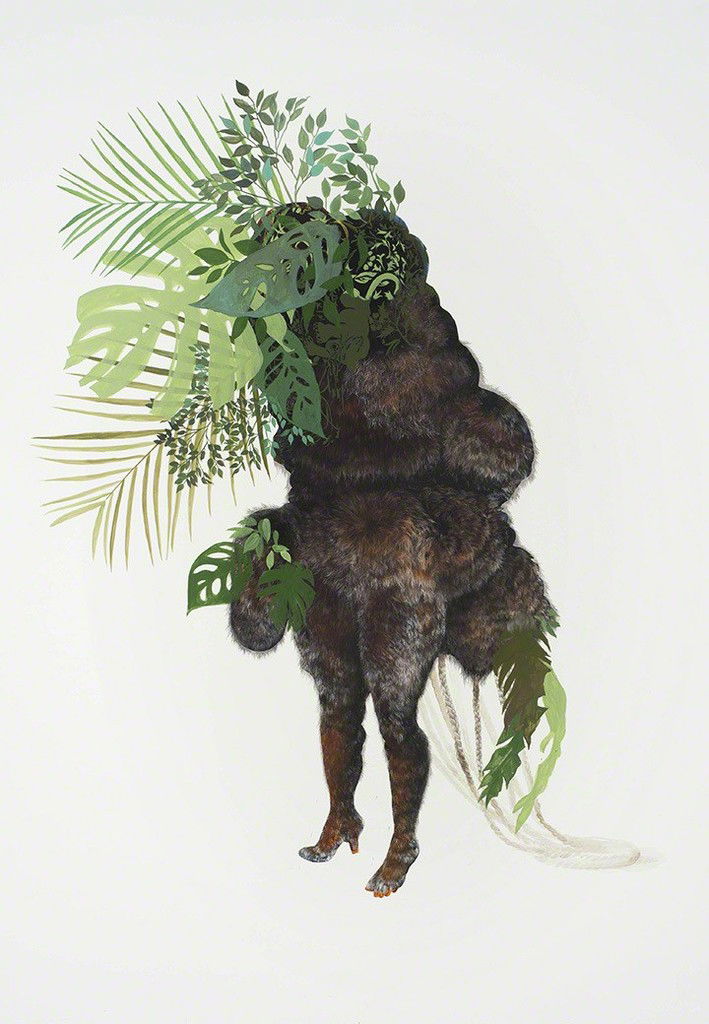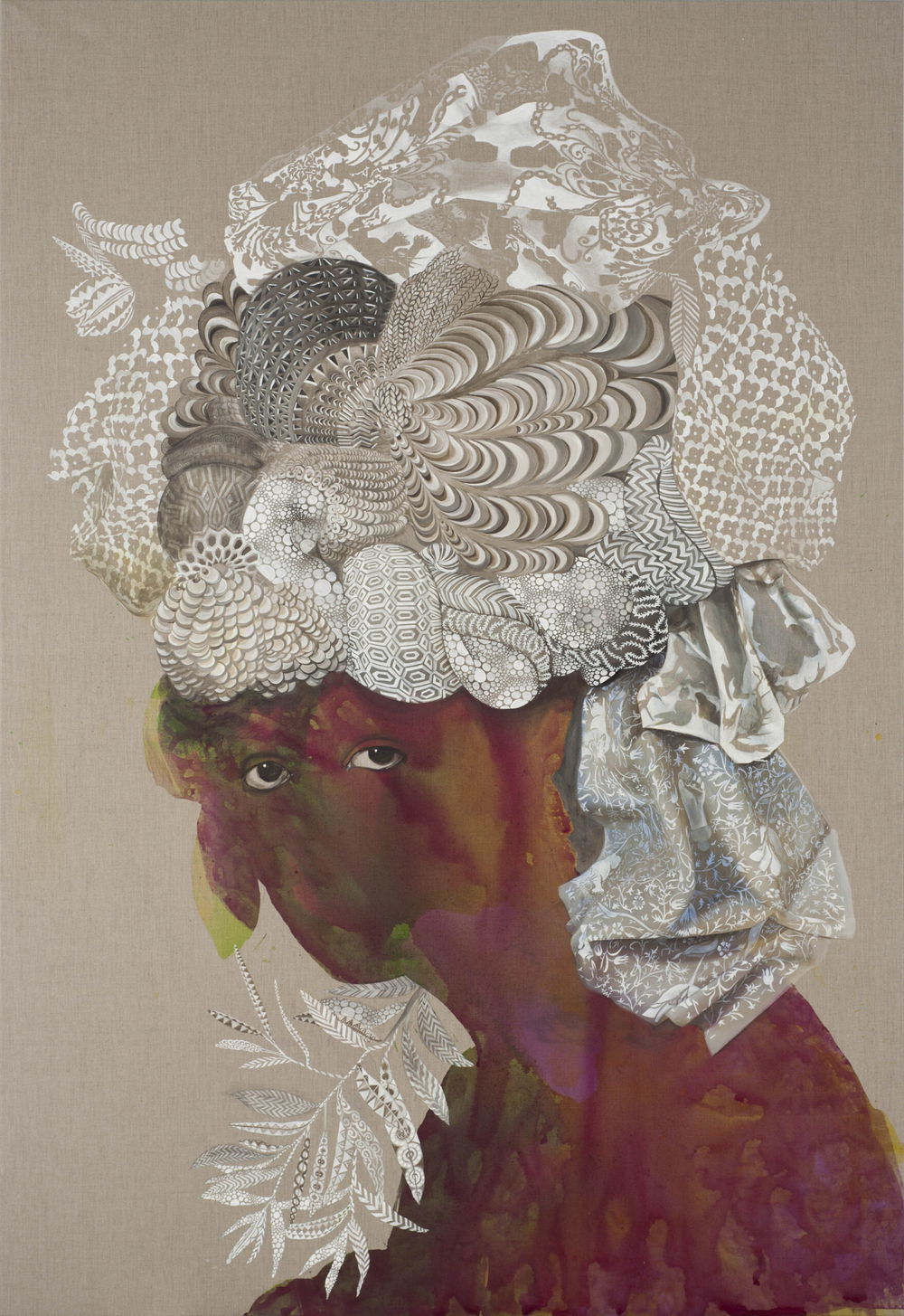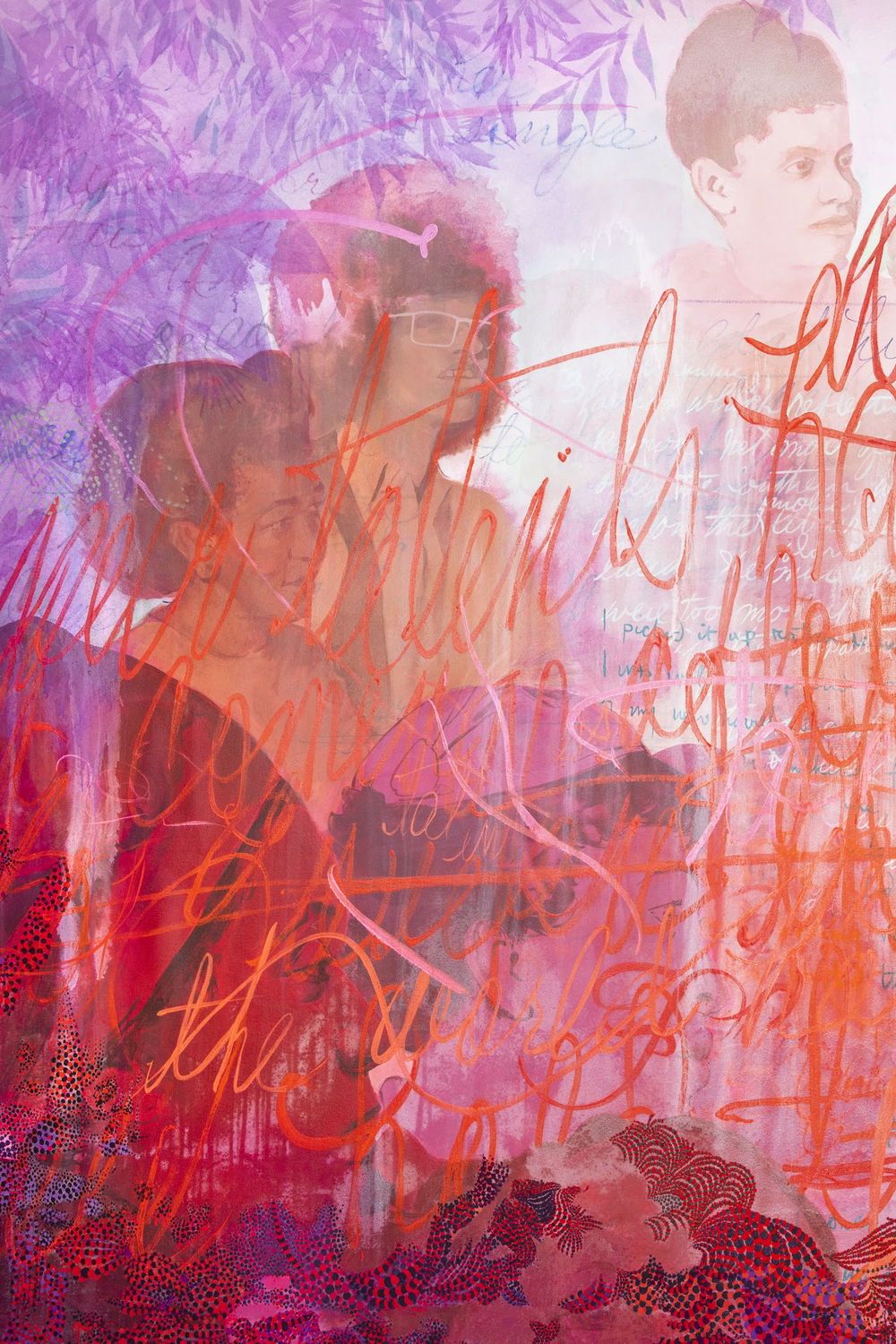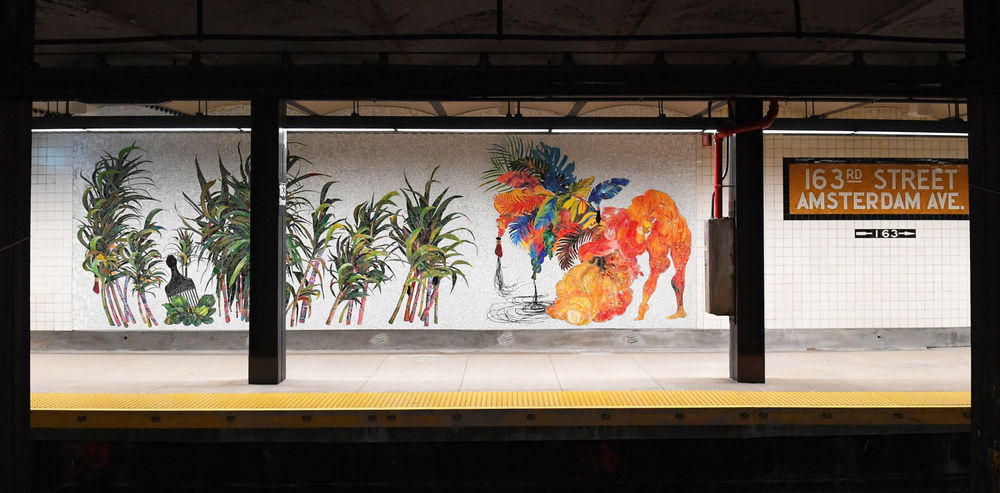
Photo by Jorge Alberto Perez.
Born in Santiago de los Caballeros to a Dominican mother and a father of Haitian descent, Firelei Báez’s concerns with the politics of place and heritage can be traced back to her own upbringing on the border between Hispaniola’s two neighboring countries whose longstanding history of tension is predicated in large part by ethnic difference. Báez’s family later moved to Miami, where she was exposed to forms of social hierarchy governed by physical appearance more specific to the U.S. Although Báez has engaged in self-portraiture, her work ties together subject matter mined from a wide breadth of diasporic narratives.
Past series have not only examined ciguapas, elusive and cunning female creatures from Dominican folklore—as well as tignons, head-coverings women of color were legally required to wear in 18th century New Orleans, and the visual language of the Black Panther Movement. By rendering spectacular bodies that exist on opposite sides of intersecting boundaries—between human and landscape, for example, or those reinforcing racial and class stratification—Báez carries portraiture into a liminal space, where subjectivity is rooted in cultural and colonial narratives as much as it can likewise become untethered by them.
Donor -This award was generously supported by the USA Board of Trustees.
This artist page was last updated on: 12.30.2024

living monuments in historical chapters by Firelei Báez. Oil on canvas, hand-painted tarp, live plant matter. Installation view.
Photo courtesy of the artist.

Ciguapa Pantera (to all the goods and pleasures of this world) by Firelei Báez, 2015. Acrylic and ink on paper, 95 x 69 inches.
Photo courtesy of the artist.

Sans-Souci (This threshold between a dematerialized and a historicized body) by Firelei Báez, 2015. Acrylic and ink on linen, 108 x 74 inches.
Photo courtesy of the artist.

To write fire until it is every breath (detail) by Firelei Báez, 2018. Acrylic on canvas, 108 × 192 inches.
Photo courtesy of the artist.

Ciguapa Antillana, me llamo sueño de la madrugada 'Who more sci-fi than us? (detail) by Firelei Báez. One of four large mosaic works for the MTA Arts 163rd Street C train station.
Photo courtesy of the artist.